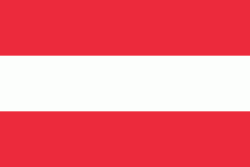Oberlaa (Oberlaa)
Oberlaa is a station on Line U1 of the Vienna U-Bahn. Since September 2, 2017, it has been the new southern terminus of the U1, which had its terminus at Reumannplatz since 1978. Oberlaa station is located in the south of Vienna's 10th district directly at the entrance to the Therme Wien. To the north of the station is the Kurpark Oberlaa, to the south is the Donauländebahn; beyond the railway is the historical center of the district of Oberlaa.
The station's construction was part of the fourth expansion stage of the Vienna U-Bahn.
Before the opening of the extension of the U1, the eastern branch of the tram line 67, which had been built at the Vienna International Garden Exhibition in 1974, ended here. It was shortened to the Per-Albin-Hansson-Siedlung during the construction of the U-Bahn and closed with the opening of the extension.
In the area of the subway station, a storage and inspection hall for U1 trains and a park-and-ride facility for commuters from the surrounding area were built. Exits lead to Laaer-Berg-Strasse, Hämmerlgasse, Biererlgasse and Kurbadstraße.
* Wiener Linien: U1 Verlängerung nach Oberlaa
The station's construction was part of the fourth expansion stage of the Vienna U-Bahn.
Before the opening of the extension of the U1, the eastern branch of the tram line 67, which had been built at the Vienna International Garden Exhibition in 1974, ended here. It was shortened to the Per-Albin-Hansson-Siedlung during the construction of the U-Bahn and closed with the opening of the extension.
In the area of the subway station, a storage and inspection hall for U1 trains and a park-and-ride facility for commuters from the surrounding area were built. Exits lead to Laaer-Berg-Strasse, Hämmerlgasse, Biererlgasse and Kurbadstraße.
* Wiener Linien: U1 Verlängerung nach Oberlaa
Map - Oberlaa (Oberlaa)
Map
Country - Austria
 |
 |
| Flag of Austria | |
Austria emerged from the remnants of the Eastern and Hungarian March at the end of the first millennium. Originally a margraviate of Bavaria, it developed into a duchy of the Holy Roman Empire in 1156 and was later made an archduchy in 1453. In the 16th century, Vienna began serving as the empire's administrative capital and Austria thus became the heartland of the Habsburg monarchy. After the dissolution of the Holy Roman Empire in 1806, Austria established its own empire, which became a great power and the dominant member of the German Confederation. The empire's defeat in the Austro-Prussian War of 1866 led to the end of the Confederation and paved the way for the establishment of Austria-Hungary a year later.
Currency / Language
| ISO | Currency | Symbol | Significant figures |
|---|---|---|---|
| EUR | Euro | € | 2 |
| ISO | Language |
|---|---|
| HR | Croatian language |
| DE | German language |
| HU | Hungarian language |
| SL | Slovene language |















